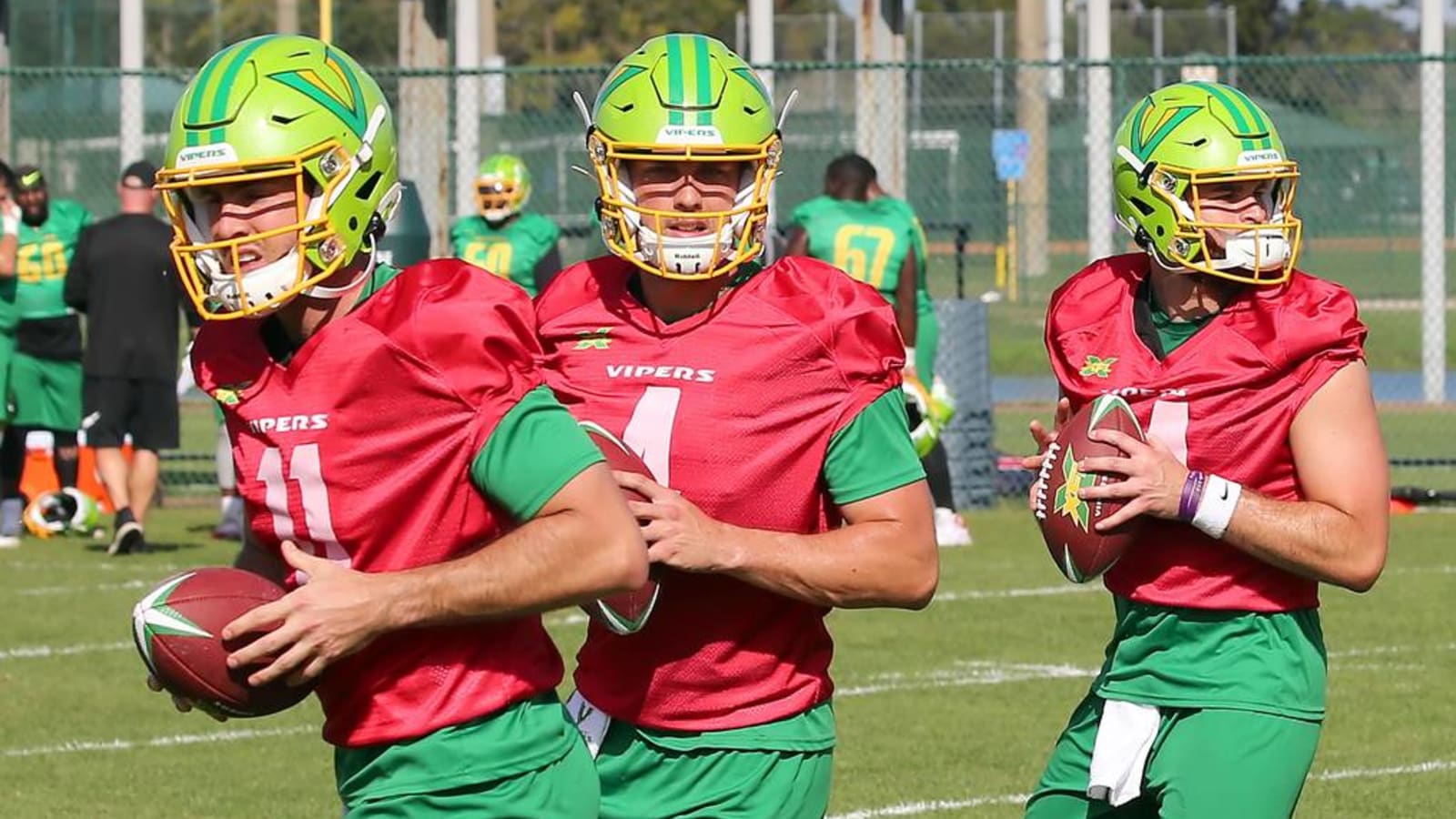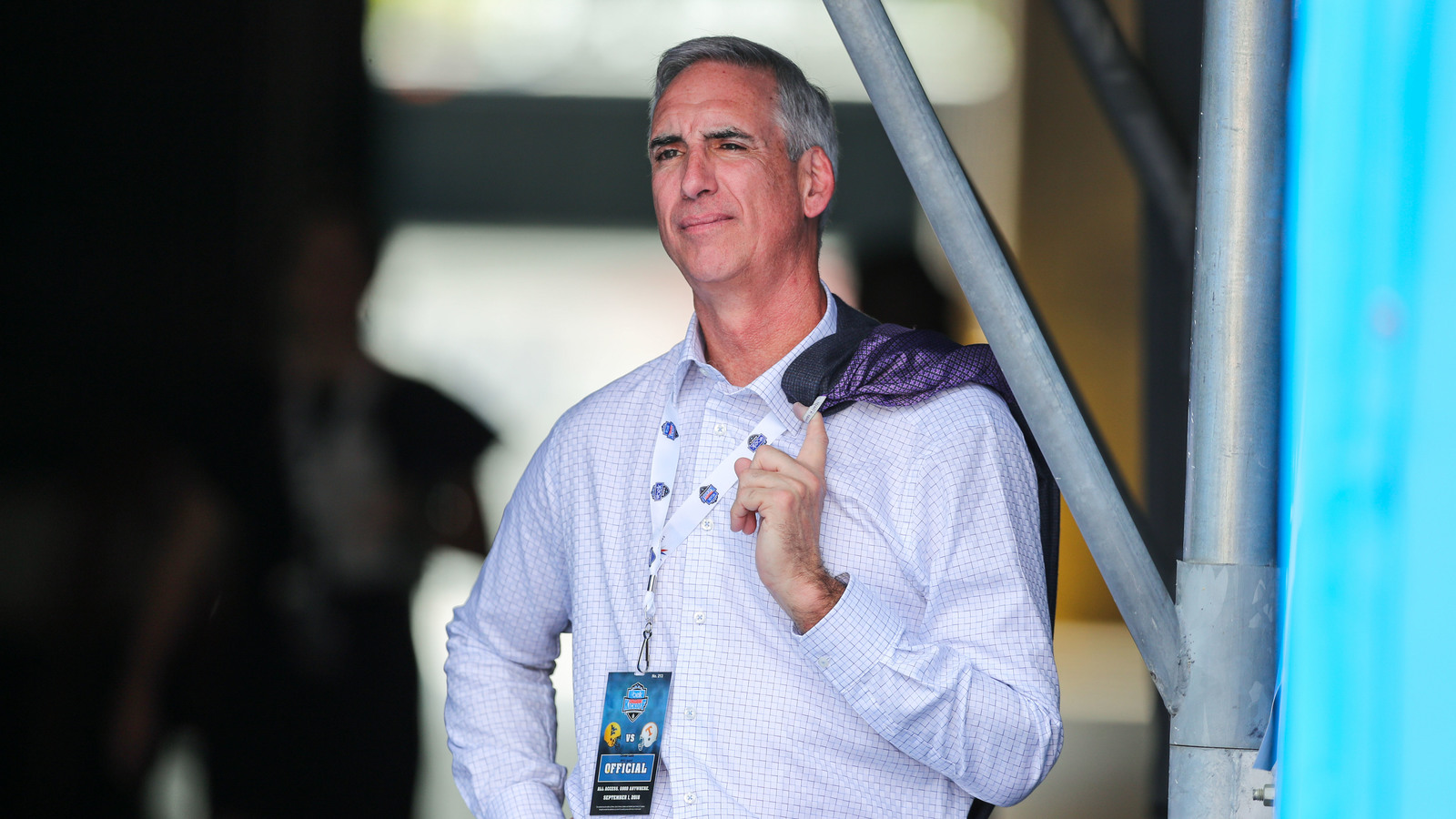
XFL rules innovations, common-sense replay system worth a look by NFL
As the NFL's premier weekend approached, the XFL -- the latest attempt at a legitimate offseason football league -- unveiled its rules. The eight-team league will look different from its lackluster 2001 version, thanks to interesting rules innovations.
In the 2010s, the NFL made positive rule changes: the imperfect but better overtime; the adoption of college football’s two-point conversion return; transforming the extra point from irrelevant to watchable. The 100-year-old league can use the XFL's relaunch to study its innovations.
Goal-line scheming revolution necessary
XFL 2.0, which opens play February 8, will use a shootout-style overtime akin to knockout-round soccer. Each team will start on the opponent’s 5-yard line, alternating goal-to-go plays. The team with the most successful conversions in a five-try format wins. Using the soccer- and hockey-themed shootout marks a useful step for a league that will need to straddle the line between a different brand of football and XFL 1.0-level ridiculousness.
For sheer curiosity, the first XFL overtime game will be must-see. This arrangement will hopefully prompt the XFL's mix of ex-NFL head coaches and assistants and ex-college HCs to green-light cutting-edge goal-line play designs. Because if that does not happen, yikes will this be repetitive. On one hand, seeing a shootout go into the sixth or seventh round because of ties will be riveting. The counterargument: using five yards of real estate -– and, thus, similar actions from teams -– will limit an aesthetically diverse sport as 95 yards of the field go unused.
This idea is commendable and outflanks the Alliance of American Football’s OT for authenticity. But the NFL will not touch this one. It is more likely to mandate that each team has a possession in OT.
An unusual re-ignition
After placing kickoffs at the 30-yard line from from 1994-2010, the NFL returned it to the 35, reducing the play's relevancy. XFL kickoffs will capture attention. Kickers will line up at their own 25-yard line while 10 teammates stand at the opposing 35, with the return team’s 10 non-returners positioned five yards away at the 30. With the 20 primary blockers and tacklers frozen until the returner fields the kick, these sequences may become more deliberate run plays disguised as kick returns.
This concept both makes the kickoff an impact play and will drastically reduce the full-speed collisions that occur under the standard rule. It could breathe life into a sequence that is both dangerous and less relevant in the NFL. If this works the XFL, the NFL should take notice. But a league averse to significant changes will probably avoid dramatically reshaping one of its signature plays.
Post-touchdown promise exists
Extra points were not part of the original XFL rulebook. Teams went for one point and, after an odd in-season rule change, two- and three-point tries became legal. In the rebooted league, PATs remain banned. Teams can attempt one-, two- or three-point conversions. Attempts from the 2-yard line are worth one point. A two-point try is placed on the 5-yard line, with a three-pointer coming from the 10.
This structure, though, does not appear to separate the conversion distances especially well. One- and three-point tries being eight yards apart is a bit narrow; one- and two-point plays will look similar. And with defenses allowed to return conversion tries, returns on one-pointers requiring longer runs will be worth two fewer points than three-point defensive returns –- which could well require less sprinting on the defense’s behalf.
Eliminating kickers from this part of the game, however, represents progress. NFL commissioner Roger Goodell is pleased with the effects of moving the extra point back 13 yards, but mandating another offensive play would be good for his sport.

And there's more ...
The XFL will now allow fair catches, as football's safety awareness resides in a vastly different place than it did when XFL 1.0 marketed its no-fair catch rule 19 years ago. Disincentivizing punts will not catch on in the NFL, and the XFL's two-forward pass implementation (if forward pass No. 1 is not past the line of scrimmage) is unnecessary.
However, the XFL's league's replay system may make the NFL look bad. Replay reviews will not originate from coach’s challenges and, like the AAF, a sky judge will be in place to correct egregious late-game errors. The NFL’s questionable coach’s challenge system (which differs from the booth-review replay rules first used from 1986-91) and mocked experiment with reviewable pass interference bring weekly criticism to the country's richest sports entity. How the XFL’s common-sense setup fares should perhaps be the league's central component for NFL owners to study.
These changes supply obvious intrigue. But the AAF, the late-aughts/early-2010s United Football League and XFL 2001 showed the uphill battle startup leagues face when they do not employ higher-end talent as the USFL did.
Commissioner Oliver Luck, father of former NFL QB Andrew Luck, indicated avenues for college underclassmen to enter the league will exist, but with such talents unlikely to surface much in 2020, the XFL’s reboot must survive a season of second-rate players who have experience in the NFL, AAF, CFL and Arena Football League. The XFL probably erred by placing seven of its eight teams (excepting St. Louis) in NFL markets; it will be difficult for the league to gain fan support in these cities. The AAF at least stationed the bulk of its franchises in non-NFL locales.
The XFL has two four-team conferences: the Western (Dallas Renegades, Houston Roughnecks, Los Angeles Wildcats and Seattle Dragons) and Eastern (DC Defenders, New York Guardians, St. Louis BattleHawks and Tampa Bay Vipers).
If the league's comeback stretches to 2021, it will do so on the strength of its innovations rather than the football itself.
More must-reads:
- XFL announces intriguing rules for 2020 season
- Report: Dean Blandino will be XFL’s head of officiating
- The '100 catches in an NFL season' quiz
Breaking News
Customize Your Newsletter
 +
+
Get the latest news and rumors, customized to your favorite sports and teams. Emailed daily. Always free!

